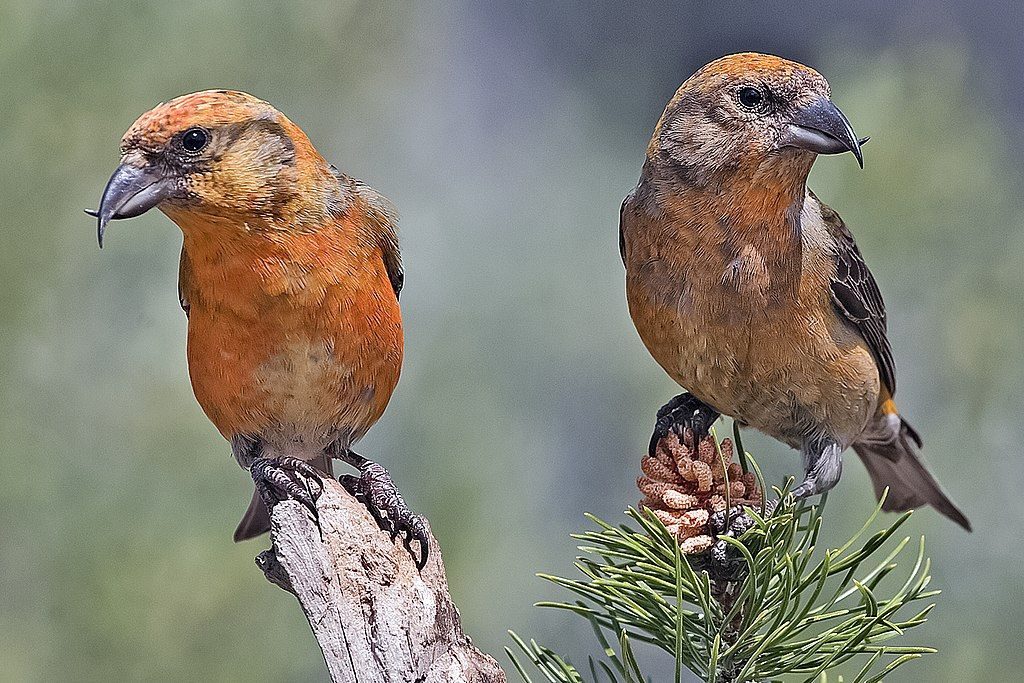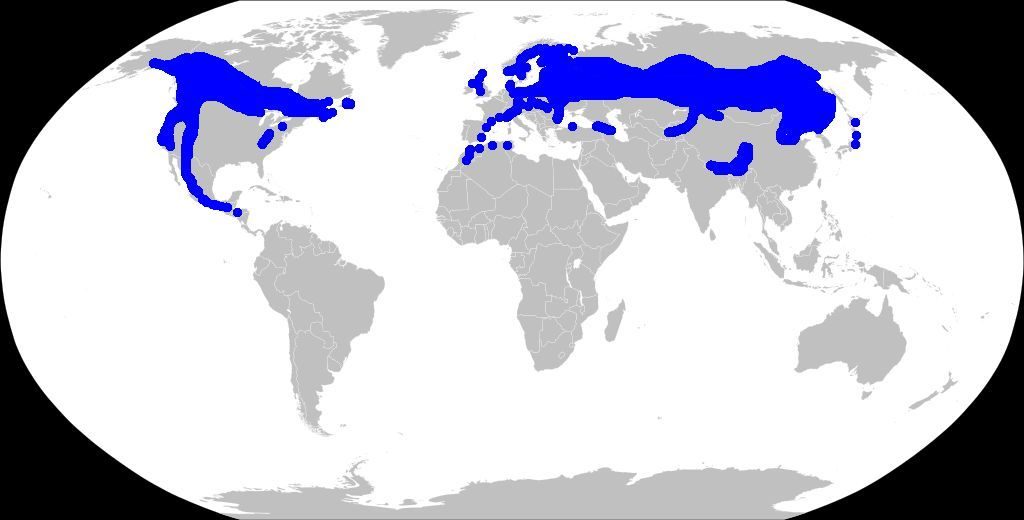
Alaska Birding with PIB: Anchorage to Seward 18 June 2019
Red crossbills (Loxia curvirostra) are conifer specialists that breed across North America and Eurasia, from Alaska to Newfoundland, from Scotland to Japan. They are so tied to spruces, pines and firs that you won’t find them in deciduous forests nor anywhere that the cone crop has failed. That explains why in three decades I’ve seen only one red crossbill in western Pennsylvania.

Red crossbills eat conifer seeds by prying open the cones using their crossed bills. Their beaks have evolved to match the cones they open — and so have the cones. A 2010 study led by C. Benkman showed that it’s a continuous arms race in which the cones evolve to foil the beaks and the beaks evolve to open the cones. The crossbill-cone competition has resulted in 21 subspecies of red crossbills with different beaks and call types. One population in Idaho, the Cassia crossbill (Loxia sinesciuris), was given separate species status in 2017.
Crossbill beaks are such important tools that a bird’s right-handedness or left-handedness is expressed in the crossing of his beak. Individual beaks cross right or left, as shown in the two male crossbills above.
Though red crossbills don’t migrate, they range far and wide in search of food, calling “jip jip” as they fly. Their flocks are usually noisy but fall silent when they’re feeding intensely. In his Essential Field Guide Companion Pete Dunne describes them as Eclectic Parrot-Finches: wide-ranging, social, and parrot-like in behavior.
Red crossbills favor old growth conifer forests because the cone crop is heavier on trees more than 60 years old. If I’m lucky, today I’ll see the “Red Parrot-Finch of the Pines” near Seward, Alaska.
UPDATE: I wasn’t lucky. 🙁
(photo and base map from Wikimedia Commons, breeding range drawn freestyle by Kate St. John; click on the captions to see the originals)